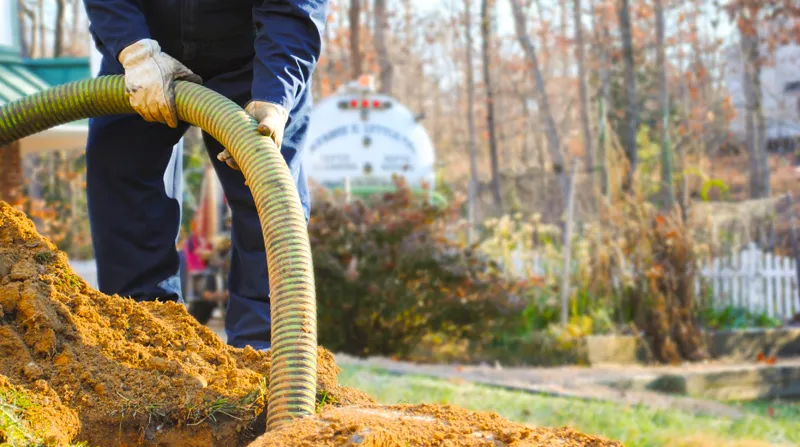Owning a home with a septic system comes with the responsibility of proper maintenance to ensure its longevity and efficient operation. Regular septic tank pumping is a crucial part of this maintenance. However, it’s not enough to pump your septic tank on a predetermined schedule; you should also evaluate the health of your septic system. In this article, we will introduce you to the pumping checklist—a set of key steps and considerations to assess the overall condition and performance of your septic system during the pumping process.
Why Evaluate Your Septic System During Pumping?
Septic tank pumping provides an excellent opportunity to assess the health of your entire septic system. By conducting a thorough evaluation while the tank is being pumped, you can identify potential issues, prevent future problems, and ensure that your septic system continues to function efficiently. Here’s why it matters:
- Early Detection of Problems: Identifying issues early can prevent costly repairs or system failures down the line.
- Preventative Maintenance: Addressing minor problems during pumping can extend the life of your septic system and save you money in the long run.
- Improved Efficiency: A well-maintained septic system operates more efficiently, reducing the risk of backups and slow drains.
- Environmental Protection: Regular evaluations help ensure that your septic system does not pose a risk to the environment by preventing leaks or contamination.
The Pumping Checklist: Evaluating Your Septic System
Now, let’s dive into the pumping checklist—a series of steps and considerations to evaluate the health of your septic system during the pumping process:
- Hire a Professional:
- Start by hiring a licensed and experienced septic service professional to perform the pumping. Professionals have the knowledge and equipment needed for a thorough assessment.
Keep Records:
-
- Maintain records of past septic pumping and inspections. This information can help track the condition of your system over time.
Assess Pumping Frequency:
-
- Review the recommended pumping frequency for your septic system. This is typically based on factors such as tank size and household size.
Inspect Access Points:
-
- Ensure that access points, such as the septic tank lid and cleanout ports, are in good condition and properly sealed. Damaged or missing lids can pose safety hazards and allow surface water to enter the tank.
Check Tank Levels:
-
- Observe the levels of solid waste and sludge inside the septic tank as it is being pumped. Excessive sludge buildup may indicate that your system needs more frequent pumping.
Inspect Inlet and Outlet Baffles:
-
- Examine the inlet and outlet baffles within the septic tank. Baffles help control the flow of wastewater and solids. Damaged or missing baffles can affect system performance.
Measure Scum Layer:
-
- Determine the thickness of the scum layer on the surface of the septic tank. An abnormally thick scum layer could indicate issues with the system’s bacterial breakdown process.
Assess Drainfield Health:
-
- While pumping, ask the professional to assess the condition of your drainfield. Signs of trouble may include standing water, foul odors, or lush, green grass in the drainfield area.
Inspect for Leaks:
-
- Check for any signs of leaks around the septic tank, drainfield, or distribution box. Leaks can lead to contamination and environmental damage.
Evaluate Effluent Quality:
-
- Evaluate the quality of the effluent (liquid leaving the tank) during pumping. It should appear clear and free of debris. Cloudy or murky effluent may indicate issues within the tank.
Discuss Maintenance Recommendations:
-
- Consult with the septic service professional regarding any maintenance or repairs needed. Follow their recommendations to address any identified problems.
Review Pumping Records:
-
- After the pumping is complete, review the pumping records provided by the professional. This should include details such as the volume of waste removed and the condition of the tank.
Maintain a Schedule:
-
- Schedule your next septic tank pumping based on the recommendations provided by the professional. Regular maintenance is key to preventing future problems.
Conclusion
Evaluating the health of your septic system during the pumping process is a proactive and responsible approach to septic system maintenance. By following the pumping checklist and conducting a thorough assessment with the help of a professional, you can identify potential issues, ensure efficient system operation, and protect both your property and the environment.
Remember that regular septic tank pumping and maintenance play a critical role in extending the life of your septic system and preventing costly repairs. Don’t wait for problems to arise; take an active role in the care of your septic system to enjoy years of trouble-free wastewater management.



